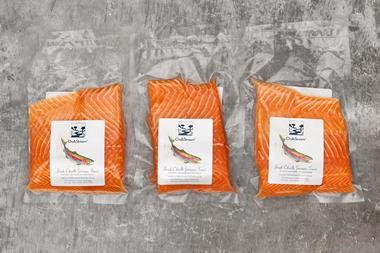A meat and fish 'resource map' is to be created to establish the extent of waste in the supply chain and find ways to reduce it.
The Wrap and Envirowise-led research will examine the poultry, beef, lamb and pork chains as well as 20 types of popular fish. In collaboration with industry bodies, suppliers and retailers, Wrap hopes to find solutions that will bring commercial and environmental benefits to businesses.
The initiative will also establish the amount of water used and disposed of in processing, as well as the carbon impact of waste and its economic value.
Waste is a huge problem in meat and fish. Although it is not yet known how much is lost throughout the supply chain, 610,000 tonnes worth £1.6bn is wasted by households every year. Some 290,000 tonnes of that are regarded as avoidable waste.
While consumers have little choice but to waste bones, giblets, fish heads and shell, there is opportunity to make more use of skin, bacon rind and fat, according to Wrap. Half of all the meat and fish wasted is poultry, of which almost two-thirds is inedible carcases and bones.
Meat and fish were high-priorities for scrutiny due to high carbon emissions and short shelf lives, said Wrap retail supply chain programme manager Charlotte Henderson. "Identifying where, when and why the waste is generated will help us develop solutions to use resources more efficiently," she said.
The project, which expects to report first results next summer, is the latest 'resource map' from Wrap, and follows the fruit and veg map in April.
The Wrap and Envirowise-led research will examine the poultry, beef, lamb and pork chains as well as 20 types of popular fish. In collaboration with industry bodies, suppliers and retailers, Wrap hopes to find solutions that will bring commercial and environmental benefits to businesses.
The initiative will also establish the amount of water used and disposed of in processing, as well as the carbon impact of waste and its economic value.
Waste is a huge problem in meat and fish. Although it is not yet known how much is lost throughout the supply chain, 610,000 tonnes worth £1.6bn is wasted by households every year. Some 290,000 tonnes of that are regarded as avoidable waste.
While consumers have little choice but to waste bones, giblets, fish heads and shell, there is opportunity to make more use of skin, bacon rind and fat, according to Wrap. Half of all the meat and fish wasted is poultry, of which almost two-thirds is inedible carcases and bones.
Meat and fish were high-priorities for scrutiny due to high carbon emissions and short shelf lives, said Wrap retail supply chain programme manager Charlotte Henderson. "Identifying where, when and why the waste is generated will help us develop solutions to use resources more efficiently," she said.
The project, which expects to report first results next summer, is the latest 'resource map' from Wrap, and follows the fruit and veg map in April.


















No comments yet